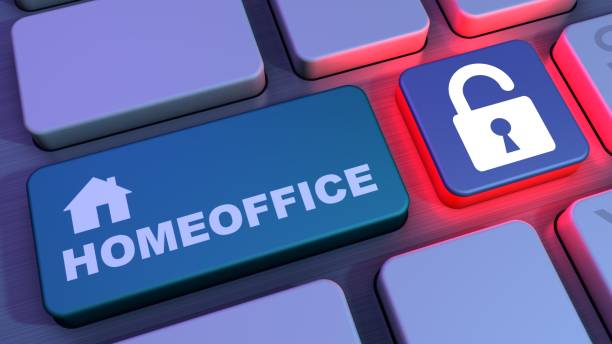As remote work becomes increasingly common, ensuring the security of your home office has never been more critical. A secure workspace not only protects your physical belongings but also safeguards your sensitive data from potential threats. In this guide, we’ll explore effective strategies to enhance your home office security, providing you with peace of mind and a productive environment.
1. Secure Your Physical Workspace
Lock Up Your Office
Just like locking the doors to your office, it’s crucial to secure the entry points to your home office. Consider investing in the best smart lock for your office door, which allows for keyless entry and better control over access. Additionally, if your workspace has windows, think about installing locks or security screens to enhance protection. If your office is situated in a shared area of your home, make it a routine to lock your office whenever you leave, particularly when guests or family members are around. This simple habit can significantly boost your security.
Create a Safe Storage Solution
Protect valuable items, such as laptops, documents, and external hard drives, by storing them in a secure cabinet or safe. This not only keeps them out of reach from intruders but also provides a designated space for your most important items. Label storage areas clearly, making it easier to find what you need without rummaging through potentially unsecured spaces.
2. Implement Cybersecurity Measures
Use Strong Passwords
Your digital security is just as important as physical security. Use strong, unique passwords for all your devices and accounts. A good password should include a mix of letters, numbers, and special characters. Consider using a password manager to help generate and store complex passwords securely.
Enable Two-Factor Authentication (2FA)
Adding an extra layer of security through two-factor authentication can significantly reduce the risk of unauthorized access to your accounts. This process typically requires you to provide a second form of identification, such as a code sent to your phone, in addition to your password. Many applications and services offer this feature, so enable it wherever possible.
Regularly Update Software and Devices
Keeping your software and devices up to date is crucial for protecting against security vulnerabilities. Software developers frequently release updates that patch security holes, so set your devices to automatically install updates whenever they become available. Additionally, ensure your antivirus software is up to date to defend against malware and other cyber threats.
3. Create a Secure Network
Use a Virtual Private Network (VPN)
A VPN encrypts your internet connection, making it more difficult for hackers to intercept your data. This is especially important if you often connect to public Wi-Fi networks, which are notoriously insecure. When choosing a VPN, look for reputable providers with strong encryption protocols.
Change Default Router Settings
Many routers come with default usernames and passwords, which are often easy for hackers to guess. Change these settings to more secure options to protect your network from unauthorized access. Additionally, regularly update your Wi-Fi password and consider setting up a guest network for visitors to keep your main network secure.
Monitor Your Network Activity
Keep an eye on your network activity for any suspicious behavior. Many routers allow you to view connected devices, so regularly check for unfamiliar connections. If you notice any unauthorized devices, disconnect them immediately and change your Wi-Fi password.
4. Maintain a Clean and Organized Workspace
Minimize Clutter
An organized workspace not only boosts productivity but also enhances security. Clutter can hide sensitive information and make it easier for unauthorized individuals to access your data. Regularly declutter your desk, and dispose of any documents that are no longer needed, preferably by shredding them.
Utilize Secure Disposal Methods
When disposing of old devices or documents containing sensitive information, ensure that you do so securely. For electronic devices, consider using data-wiping software to remove all information before disposal. For paper documents, a shredder is an excellent investment to protect against identity theft.
5. Develop an Emergency Response Plan
Know What to Do in a Breach
Despite your best efforts, security breaches can still happen. Develop a response plan outlining the steps you should take in case of a data breach or theft. This plan should include notifying your bank and credit card companies, changing passwords, and reporting the incident to the relevant authorities.
Stay Informed
Regularly educate yourself about the latest security threats and best practices. Cybersecurity is an ever-evolving field, and staying informed can help you adapt your security measures accordingly. Consider joining online communities or following trusted sources to keep your knowledge up to date.
In Conclusion
Securing your home office is a multifaceted approach that involves protecting both your physical workspace and your digital data. By implementing strong passwords, utilizing secure networks, and maintaining an organized environment, you can significantly reduce the risk of security breaches.
Remember, a secure home office not only enhances productivity but also provides peace of mind, allowing you to focus on what truly matters—your work. Taking these steps can create a safe and productive environment in your home office, ensuring that you remain focused and secure while working remotely.




